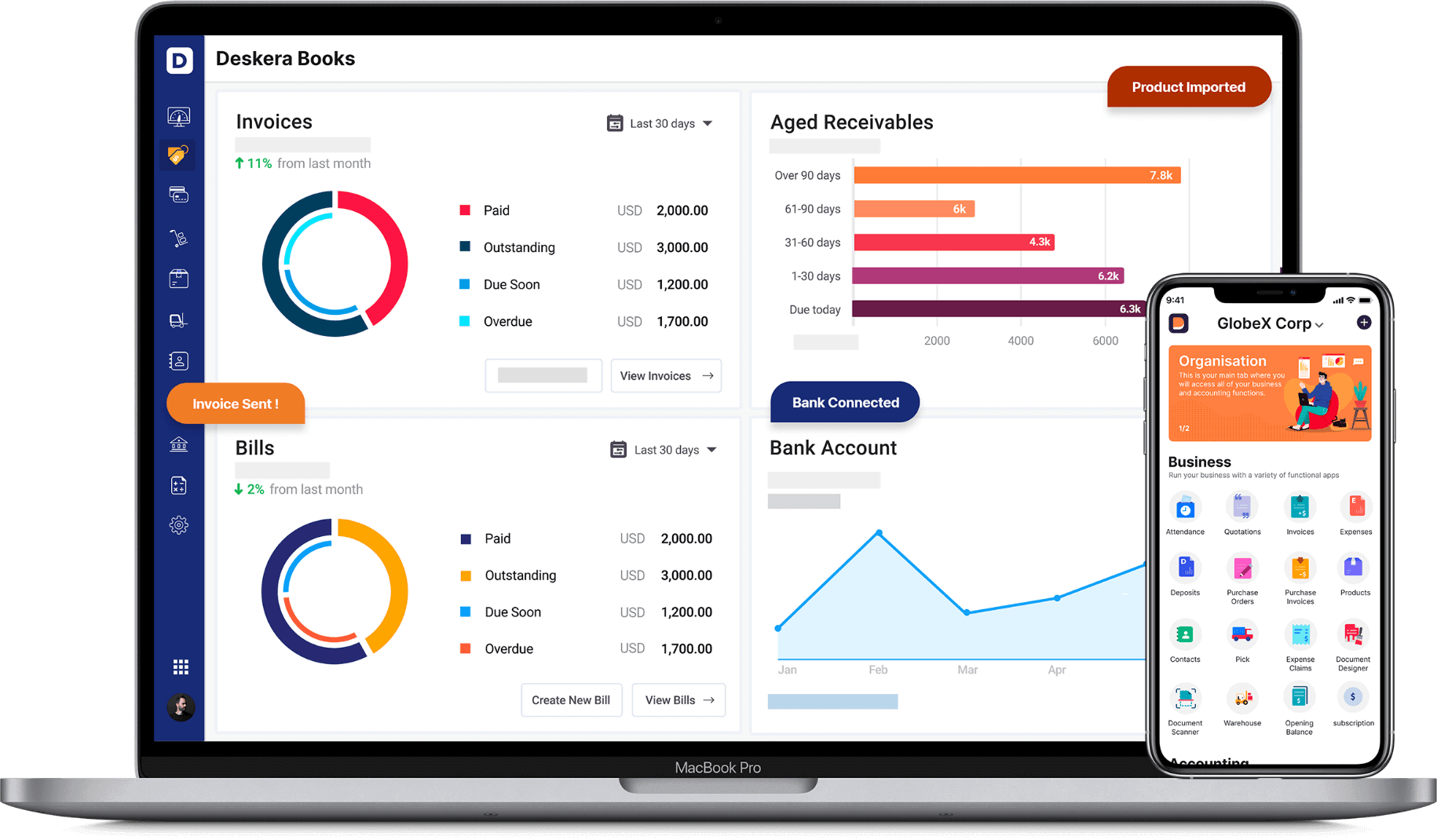Have you ever wondered, how confusing it can get to issue tip credits, for both company owners and employees? On the other hand, it's also critical to understand how tip credits go into minimum wage calculations.
When you approach tip credits effectively, you can ensure that your staff are adequately rewarded and that your taxes are properly prepared. This will also result in an increase in staff retention. Let’s understand this interesting topic in depth. Keep reading!
Table of Contents
- An Overview of Tip Credits
- Understanding Tip Credits
- Eligibility Criteria for Tip Credits
- Who is A Tipped Employee?
- What is the Minimum Wage for Tipping an Employee?
- What Happens If the Employees are Unable to Make Enough Tips?
- List of States of the U.S Related to the Law of Tip Credits
- What is the Process for the Tip Credit?
- Federal Rule for Tip Credit
- Calculating a Tip Credit
- What is Tip Pooling?
- Final Words
- Key Takeaways
An Overview of Tip Credits
With the help of tip credits, gratuities are factored into minimum wage calculations. They let an employer deduct a part of an employee's gratuities from the employer's minimum wage obligation. Tip credits are not withheld from employees' salaries; instead, if approved, employers may claim a portion of their minimum wage obligation as a tip credit.
Understanding Tip Credits
Employers can claim a tip credit in order to count employee gratuities toward their minimum wage requirement. The employers, ethically, do not “take away” the employees’ tip credits. It's only a number used to calculate the minimum wage.
Tip credits are useful in showing the central government that employee A has earned enough money in tips that they don't need to be paid the entire minimum wage.
Important Thing Employers Should Know About Tip Credits - As an employer, unless you're claiming a tip credit, your employees must be paid the federal minimum wage. You must notify the restaurant in writing or verbally that you are requesting a tip credit.
Important Things Employees Should Know About Tip Credits - If your employer claims a tip credit on your behalf, it must be appropriately reported on your pay stub and/or tip credit report. You keep all of your tips, and tip credits have no effect on your compensation. A tip credit might even help you be paid extra if you aren't generating enough money in tips.
Understanding this concept of tip credits can be claimed as confusing. But, don’t worry, there are more in-depth details shared in the further sections of this article.
Eligibility Criteria for Tip Credits
Tip credits can only be allocated to tipped employees – those who earn at least $30 in tips per month — and can only be applied to hours of work that create tips or directly support tip-producing activity, as long as they directly supporting work does not take up a significant amount of time.
More than 20% of the hours worked throughout the employee's workweek for which the employer has accepted a tip credit or a continuous period of more than 30 minutes is considered a large length of time.
The U.S. Department of Labor's Wage and Hour Division issued a Final Rule titled "Tip Regulations Under the Fair Labor Standards Act (FLSA), Partial Withdrawal" on Dec. 28, 2021, which includes this adjustment.
Customers can leave tips directly or as part of a tip pool. If the employee is given a tip credit, the tips must be at least the difference between the cash wage and the minimum wage in the jurisdiction where the employee works. If an employee's total salary and tips fall short of the minimum wage, employers must make up the difference.
Employers cannot collect a tip credit for non-tipped employees, and these non-exempt employees must be paid at least minimum wage for all hours worked.
Who is A Tipped Employee?
To begin, what exactly are tipped employees? Tipped employees are defined as anyone who earns more than $30 in gratuities per month on a regular basis, according to the Fair Labor Standards Act (FLSA). Restaurant waiters spring to mind, but valet personnel, delivery drivers, and bartenders are all tipped jobs.
What is the Minimum Wage for Tipping an Employee?
As the tipped employees often make more than the federal minimum wage ($7.25 per hour), companies are permitted to pay them less than the statutory minimum. This is referred to as the "minimum tip wage." Every state determines its own tipped minimum wage, but it must be at least $2.13 per hour to fulfil federal requirements.
California and Washington, for example, have a substantially higher tipped minimum wage. The US Department of Labor's website has further information on tipped employee minimum salaries per state, which we’ll see in the next section of this article.
What Happens If the Employees are Unable to Make Enough Tips?
Did you know that if tipped employees don't earn enough tips in a pay period, their employers must give them the federal minimum wage ($7.25)? "But wait, what about the tipped minimum wage?" you could ask. Although tipped employees are officially entitled to the lesser tipped minimum wage ($2.13), this is contingent on their tips totalling at least $7.25.
If the total of tips and pay does not equal $7.25, the employer is responsible for the difference. How does the federal government know that employees are earning enough tips to achieve minimum wage when many gratuities are in cash? Tip credits are useful in this situation.
Before we see, how does it work, let’s check which states have the law of tipping their employees and which are not?
List of States of the U.S Related to the Law of Tip Credits
States have the same authority over tip credits as they do over minimum wages. The United States Department of Labor maintains a list of current tip credits and minimum wage levels in each state.
There is no tip credit in the following states and territories, thus employers must pay tipped workers the same minimum wage as non-tipped workers:
- Alaska
- American Samoa
- California
- Commonwealth of the Northern Mariana Islands
- Guam
- Minnesota
- Montana
- Nevada
- Oregon
- Washington
The whole rule book on tipping employees may be found on the website of your respective state's or territory's labour department.
What is the Process for the Tip Credit?
To begin, employees who earn tips have a distinct minimum pay. The FLSA mandates a minimum cash wage of $2.13 per hour, while states are free to determine their own minimum cash wage (many of which pay above that).
The United States Department of Labor (DOL) offers a list of state-by-state minimum salaries for tipped employees. This establishes the standard that employees must be compensated prior to receiving tips. The employee's tip credit (the money earned in tips) must then equal at least the statutory minimum wage. Every time payroll is done, employees can claim a tip credit.
In Wisconsin, for example, the minimum cash wage is $2.33 per hour. To add up to the federal minimum wage of $7.25, the maximum tip credit is $4.92.
Do both the employer and workers enjoy receiving tips? Yes, for the most part. According to 2017 research, 72% of managers oppose the elimination of tipped employees. Employees were likewise divided on the issue, with 89% opposing it.
Tip credits are frequently beneficial to both the employer and the employee. Because the employee's compensation is supplemented by the client rather than the employer, employers have cheaper labour expenditures. Plus, compared to a flat minimum wage, tipped employees typically earn more.
If an employer fails to claim a tip credit, they must pay the minimum wage. Even if they pay minimum wage, they are still unable to keep any tips received by their employees. Employees may find minimum wage plus tips enticing, but employers may not, which is why many companies will refuse to do so until forced to.
However, some companies who opt to pay their employees minimum wage may display signs claiming that gratuities are not required. This means that an employee's hourly compensation is greater, but they are unlikely to collect many gratuities because clients are aware that they are already being appropriately compensated.
As a result, many employees prefer tip credits since they typically earn more than the basic minimum wage. Consider this: If a waitress serves three tables in an hour, each of which tips $5, she has earned $15 in addition to her hourly income. This is far more than the federal minimum wage of $7.25 per hour.
Federal Rule for Tip Credit
The Fair Labor Standards Act (FLSA) lays down the groundwork for calculating tipped employees' remuneration. There are a few crucial figures in the legislation that you should be aware of:
The minimum wage is $7.25 per hour.
The maximum credit for tips is $5.12.
After 40 hours worked in a week, overtime rates apply.
You must adhere to FLSA requirements unless you are subject to other state or local minimum wage legislation.
Calculating a Tip Credit
The tip credit should be stated on a pay stub and/or a tip credit report to legally establish a tipped employee is generating enough money. Depending on the pay schedule, tip credits are determined weekly or biweekly. It is also the obligation of the employer to clarify tip credits to tipped employees orally or in writing. The federal maximum tip credit is $5.12 per hour ($7.25 minimum pay - $2.13 tipped minimum wage = $5.12 maximum tip credit).
Here is the list of the process of calculating tip credit:
Step 1 - Check to see if tip credit is permissible in your state.
Step 2 - Decide on the hourly cash salary you'll pay your staff if tip credit is authorised. Keep in mind that this figure must meet both the federal and state minimum cash wage requirements. The federal minimum wage is $2.13 per hour, however many state minimums are higher. Let's imagine you're going to pay a minimal cash rate of $2.13 per hour as an example.
Step 3 - It is a legal necessity that you inform your employees that they are being paid less than the regular minimum wage because you accept a tip credit.
Step 4 - Keep accurate records of your employees' working hours and the number of tips they get during each shift. It will be necessary to keep correct records in order to handle payroll.
Step 5 - Calculate the tip credit for that pay period at payroll time.
Standard Formula to Calculate the Tip Credit:
|
Minimum Wage - Cash Wage = Tip Credit |
Here’s an example for a better understanding:
Hours Worked: 30 hours
Total Tips Earned: $375
Max Tip Credit: $5.12 / hour
To figure out how much the waiter earned per hour for that pay period, divide the total amount of tips by the number of hours worked.
$375 tips ÷ 30 hours = $12.50 per hour
The employee has made enough money in tips since his hourly wage is larger than the maximum tip credit of $5.12. The employer can claim the entire $5.12 tip credit and is not obligated to pay the employee any further earnings. Remember that the employer is not deducting the employee's tip credit. The tip credit is the amount that the employer is not required to pay. Consider the following tip credit computation, which is less than the maximum tip credit:
Hours Worked: 30 hours
Total Tips Earned: $120
Max Tip Credit: $5.12 / hour
$120 tips ÷ 30 hours = $4 / hour
Because $4 per hour is less than the $5.12 tip credit, the employer can only deduct $4 from their minimum wage requirement. They'll have to cover the difference in the employee's wages.
$5.12 tip credit - $4 / hour = $1.12 / hour
$1.12 / hour x 30 hours = $33.60
This employee receives an extra $1.12 per hour, for a total of $33.60 in addition to their regular compensation.
Is it Legal for an Employer to Take Employee Tips?
In particular, the answer is NO. All tips should be kept by employees. There are, however, a few important exceptions and regulations to keep in mind:
- Some organisations have a tip pooling scheme in place, however, this is only allowed among employees who get tips from clients on a regular basis (like waitstaff, bartenders, etc.). Managers are not allowed to withdraw funds from a legitimate tip pool.
- Employers can impose required service costs (for example, charging a percentage for a large party), although this is established by each state.
- Employers may also deduct an appropriate amount from an employee's tip if the tip was placed on a credit card. That deduction cannot bring the employee's pay below the minimum wage, and some states (such as California) do not allow it at all.
Even if a company pays the entire state minimum wage (rather than simply the cash wage), they are not permitted to accept gratuities from their employees.
There’s a term that popped up here, “tip pooling”. Let’s have a quick overview of this.
What is Tip Pooling?
While employers are normally banned from keeping any portion of an employee's tips, they can set up a tip-pooling system for tipped employees. When there is a considerable imbalance between important roles in the daily operations of the restaurant, this system may benefit employers since a portion or all of the tip money from the shift is collected and dispersed among the tip-earning workers.
A tip pool might alter how much of a credit you are allowed to claim for the FICA tip tax credit. A tip-pooling system, on the other hand, might assist employees to meet the minimum wage requirement if they don't collect enough tips otherwise.
Employers should be informed of current federal changes concerning tip pooling. The Department of Labor announced a final regulation in 2020 that:
- The 80/20 Rule was repealed, allowing employers to claim a tip credit for time spent performing non-tipped chores "contemporaneously with or for a reasonable duration immediately before or after" completing tipped responsibilities.
- Employers are prohibited from retaining employee tips.
- Managers and supervisors were not allowed to participate in tip pools.
The DOL clarified in a subsequent final regulation that, while managers and supervisors are not permitted to collect tips from obligatory tip pools, they are not forbidden from providing tips to qualifying employees in such pools.
As part of the Consolidated Appropriations Act (CAA) of 2018, Congress revised the FLSA. The CAA forbids an employer from retaining employee tips for any reason, including enabling managers or supervisors to keep employees' tips whether or not the company accepts a tip credit.
In sectors where employees are tipped, there are complexities in payroll and taxes, as well as responsibilities to appropriately disclose tip revenue. Fortunately, there may be financial advantages available in the form of tax credits. Consider enlisting the services of a reliable and trustworthy payroll service to guide you through the procedure.
Final Words
Just when you think you've got payroll worked out, it seems like there's a new requirement or rule to meet. The good news is that tip credits don't have to be difficult—especially if you use the answers above as a reference.
Put this knowledge to work for you, and you'll be able to guarantee that your tipped employees are paid properly and that you're in compliance with minimum wage rules.
How can Deskera Help You?
Deskera Books can help you automate and mitigate your business risks. Creating invoices becomes easier with Deskera, which automates a lot of other procedures, reducing your team's administrative workload.
Sign up now to avail more advantages from Deskera.

Learn about the exceptional and all-in-one software here:
Key Takeaways
- Employers can claim a tip credit in order to count employee gratuities toward their minimum wage requirement.
- As an employer, unless you're claiming a tip credit, your employees must be paid the federal minimum wage.
- If an employee's total salary and tips fall short of the minimum wage, employers must make up the difference.
- Tipped employees are defined as anyone who earns more than $30 in gratuities per month on a regular basis, according to the Fair Labor Standards Act (FLSA).
- Formula to calculate Tip Credit: Minimum Wage - Cash Wage = Tip Credit
Related Articles










